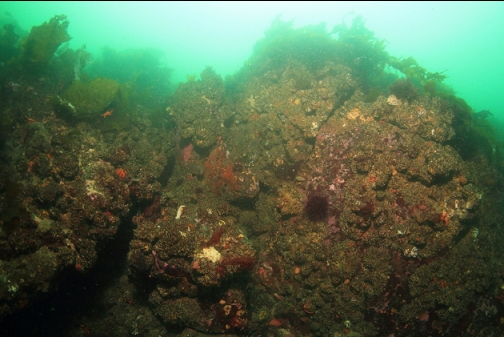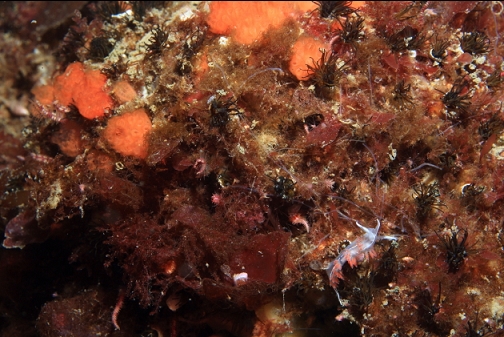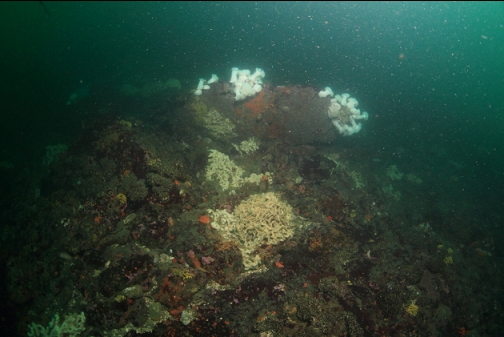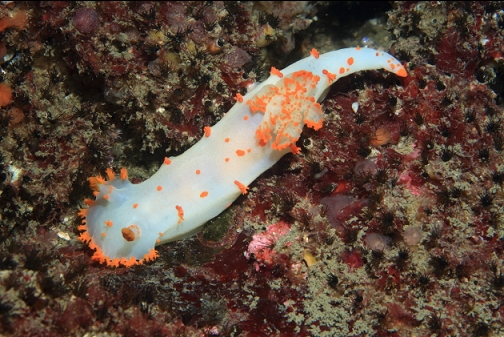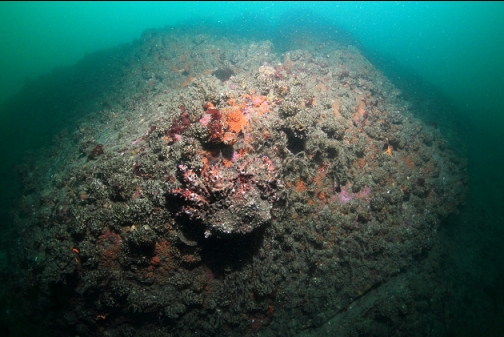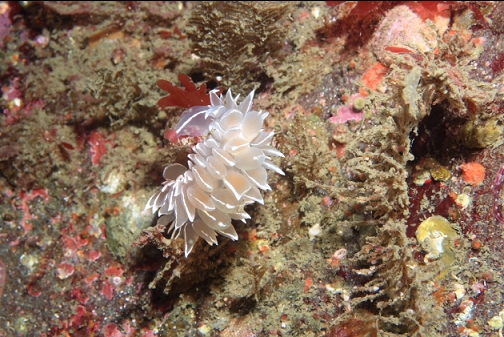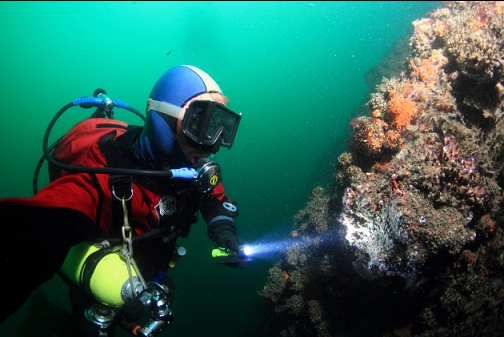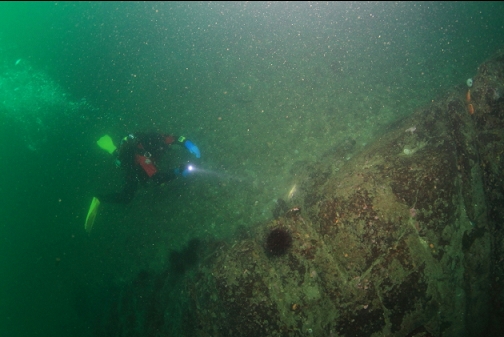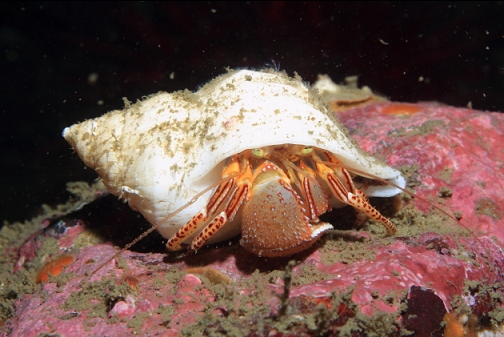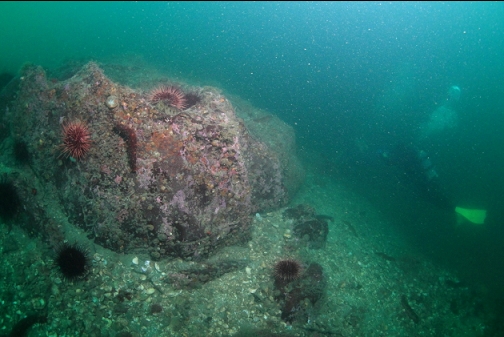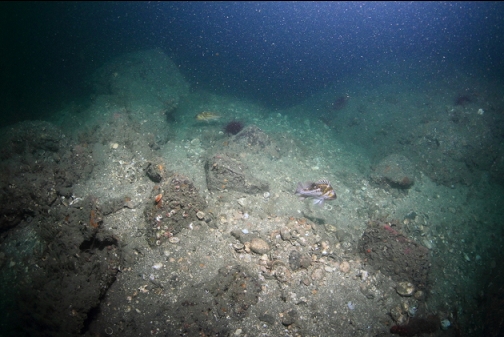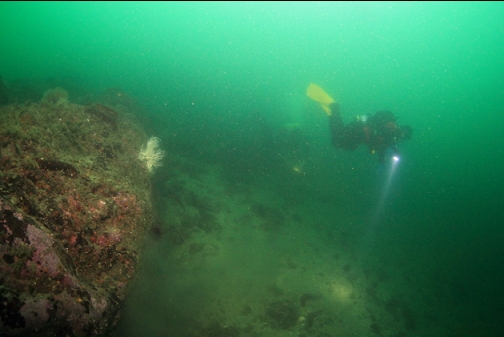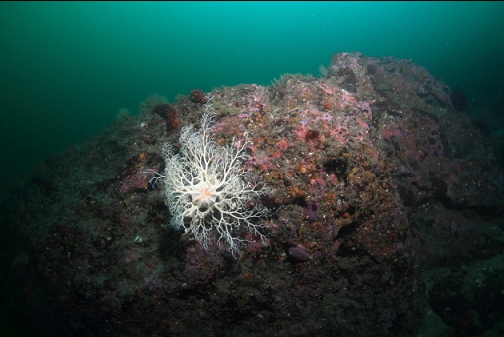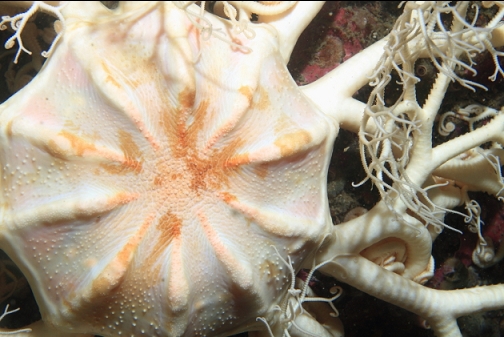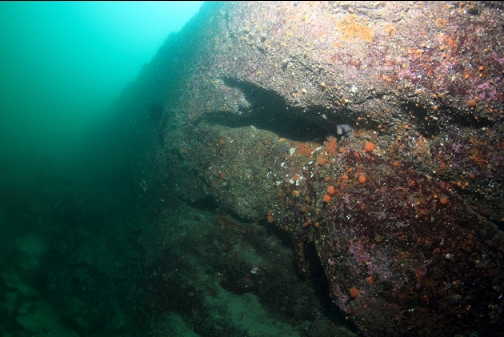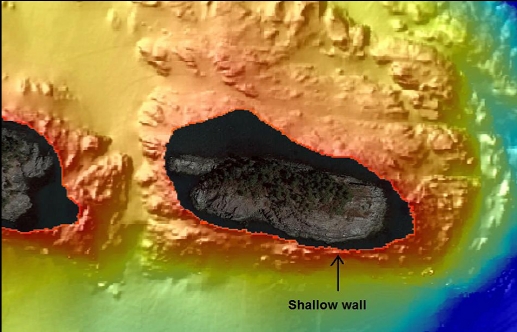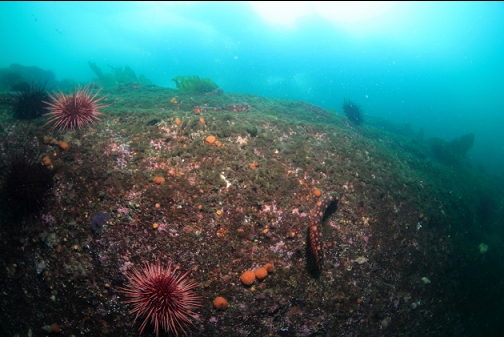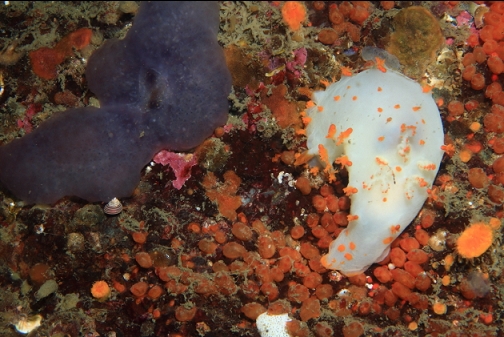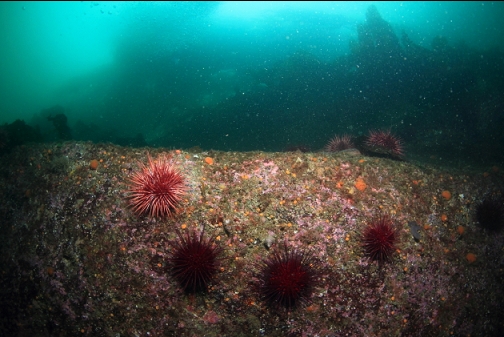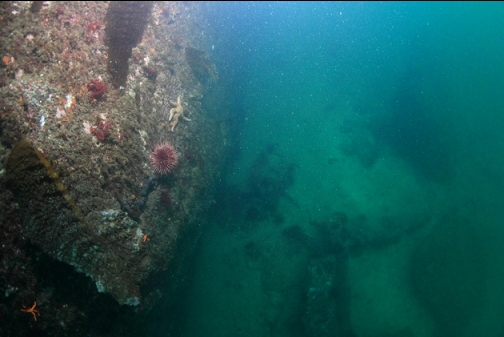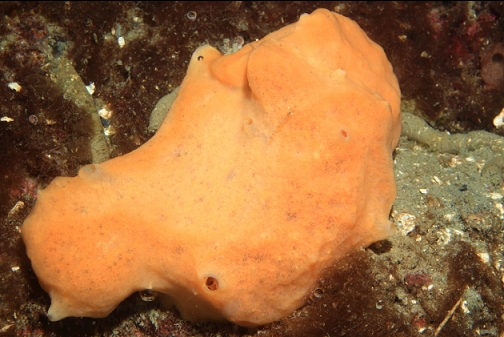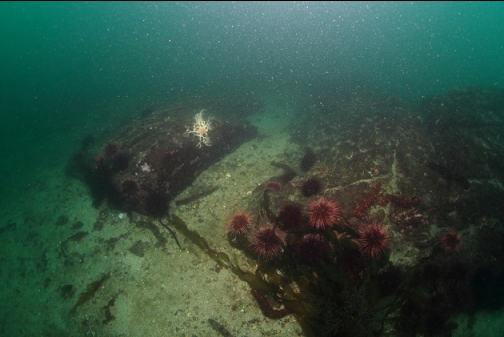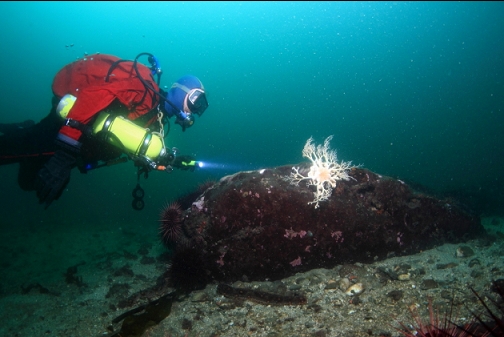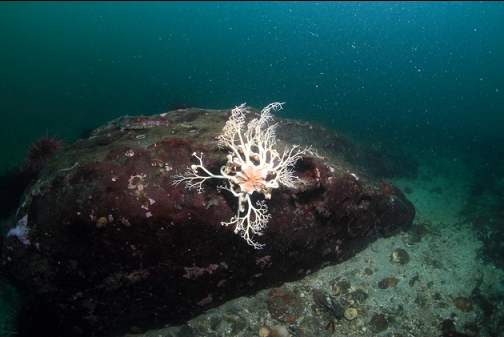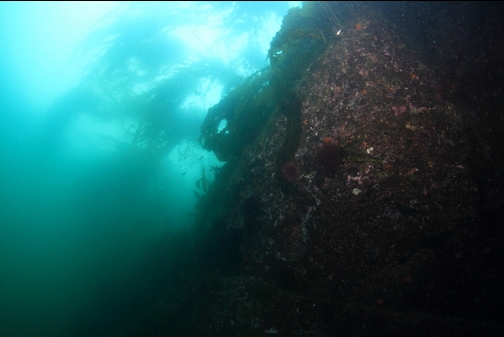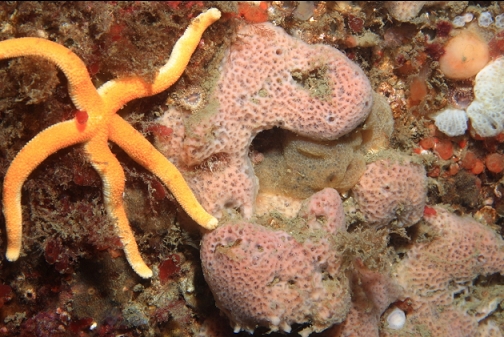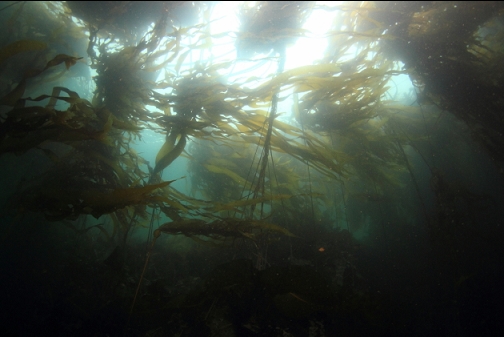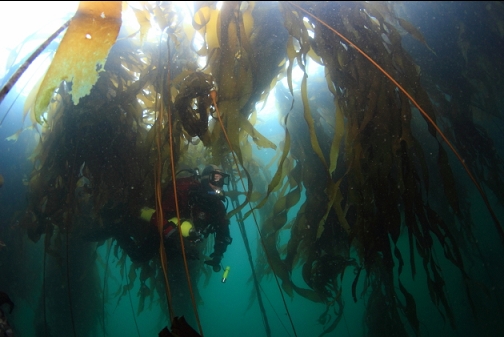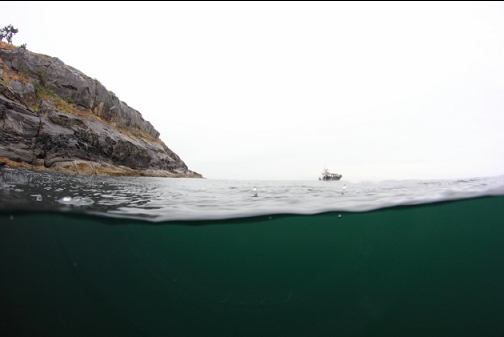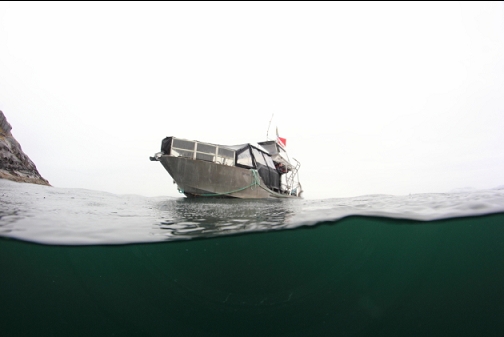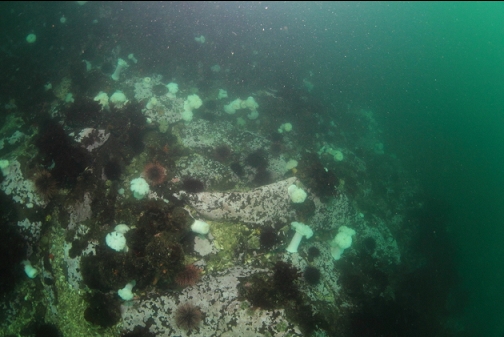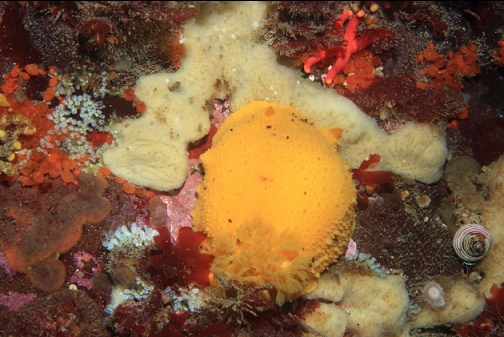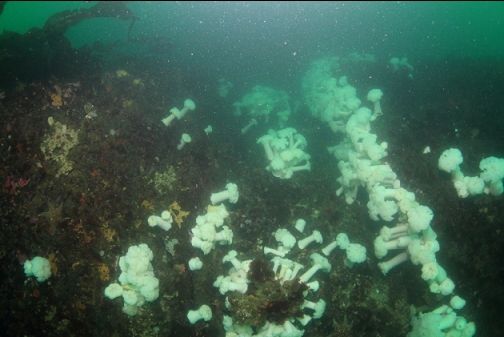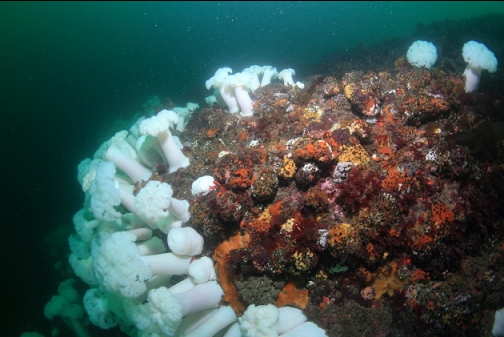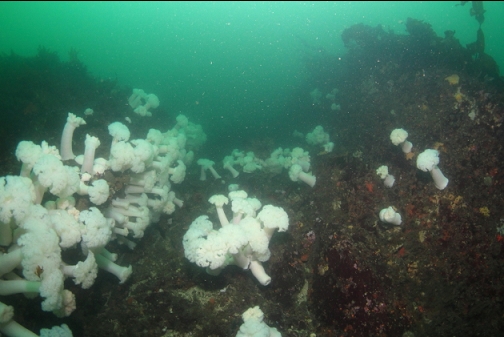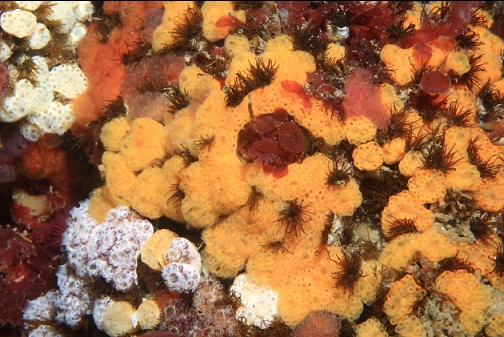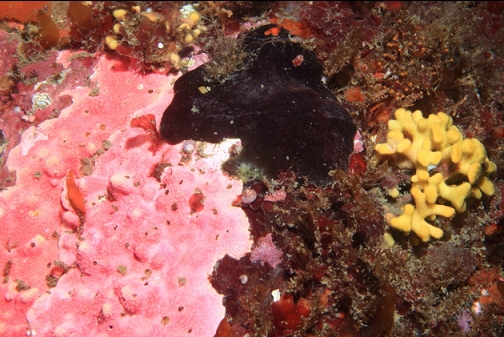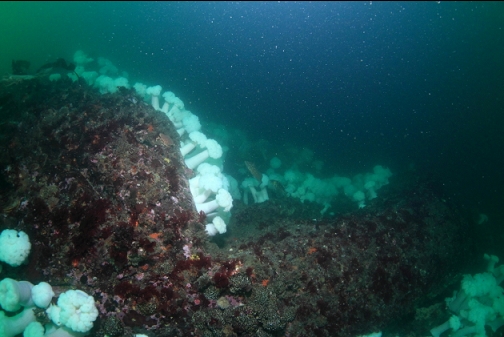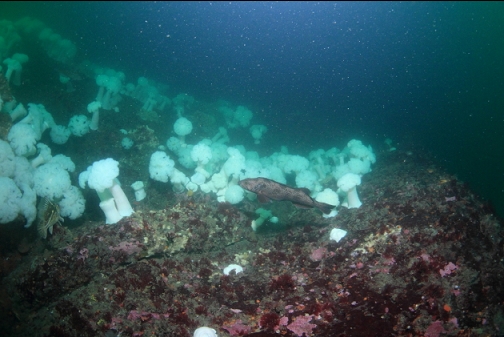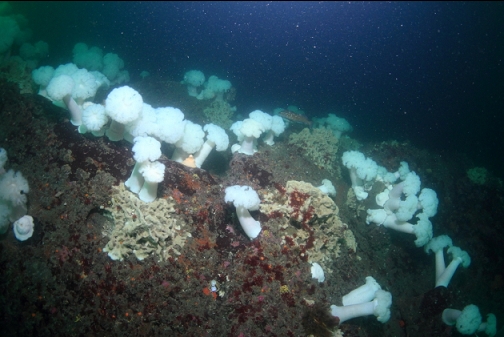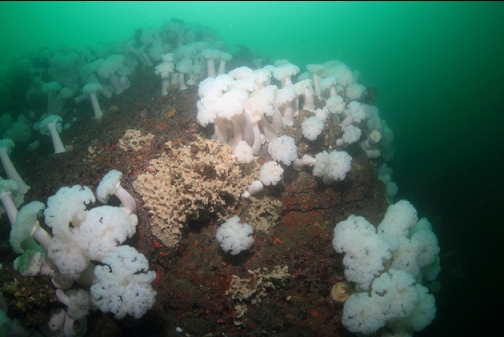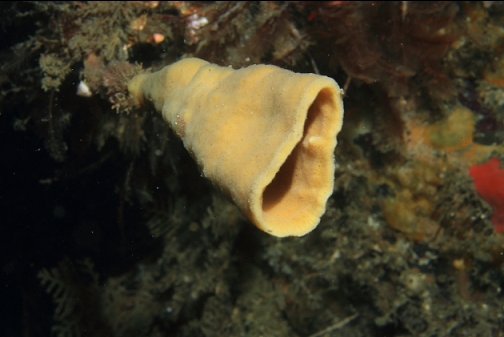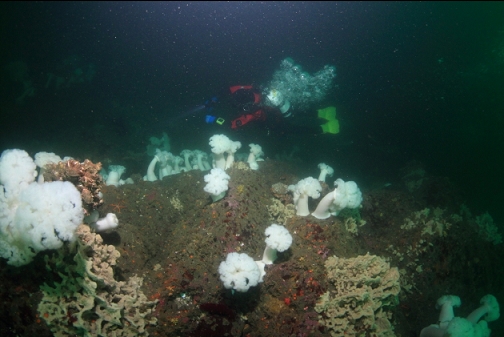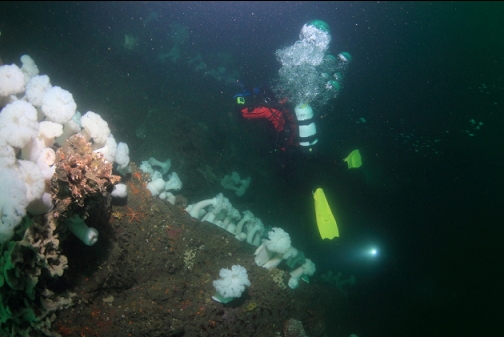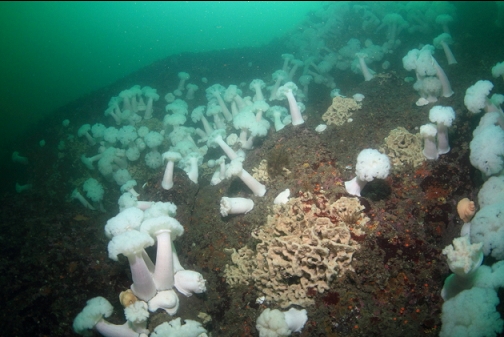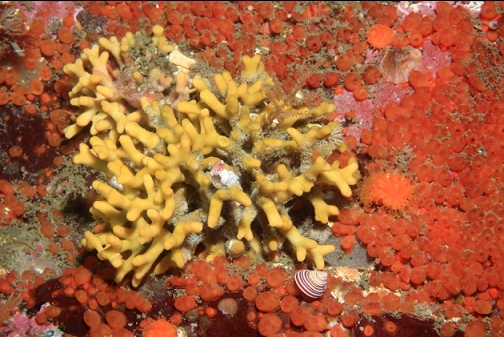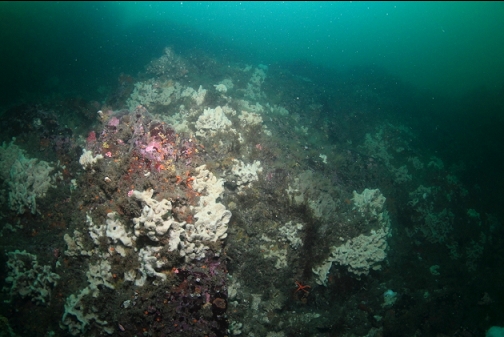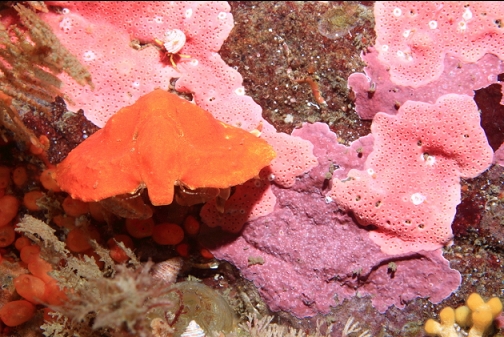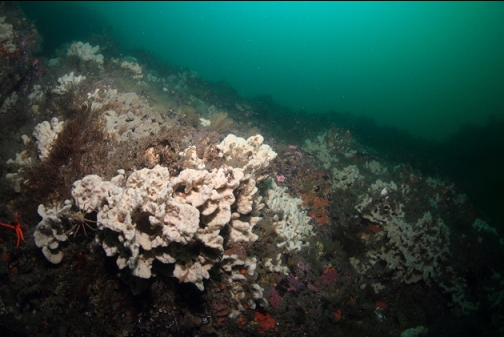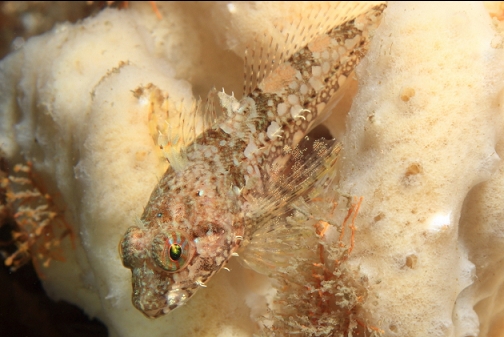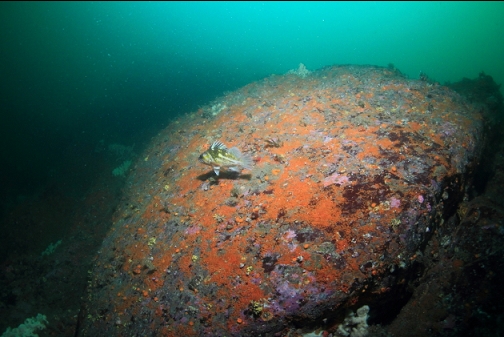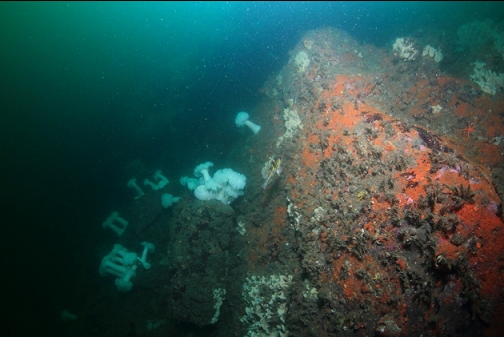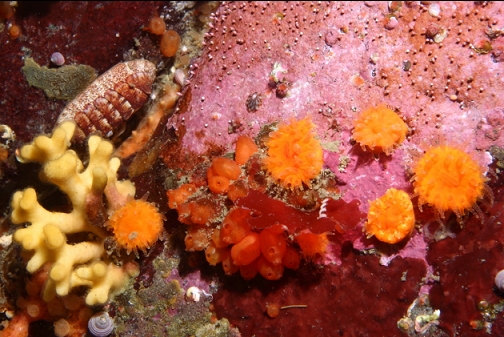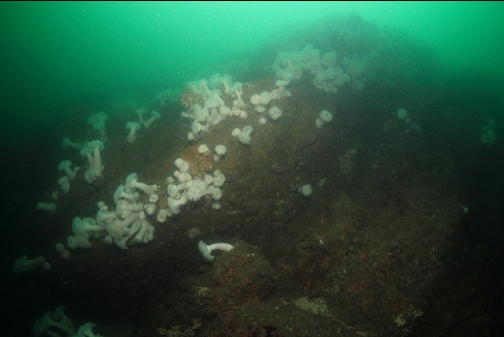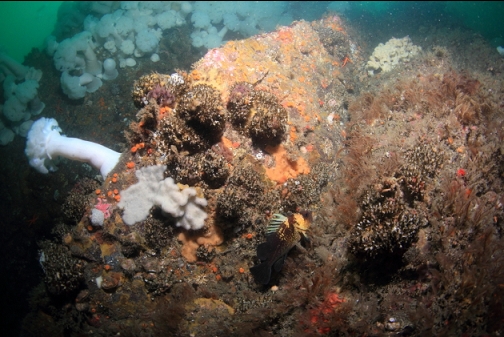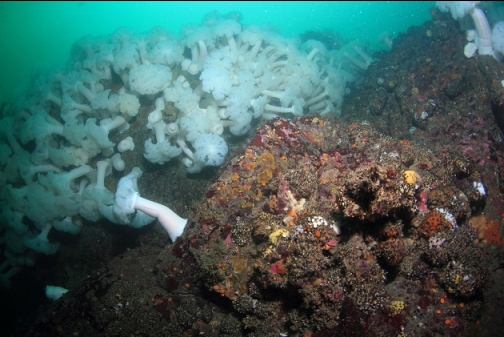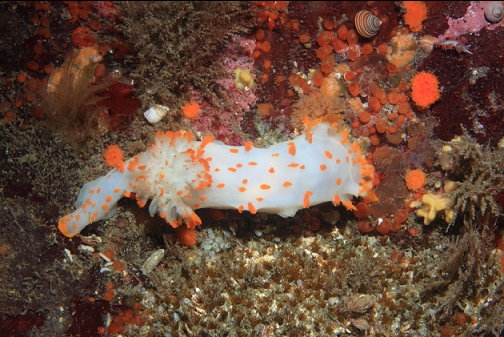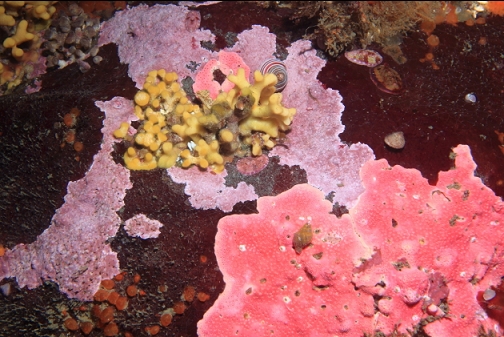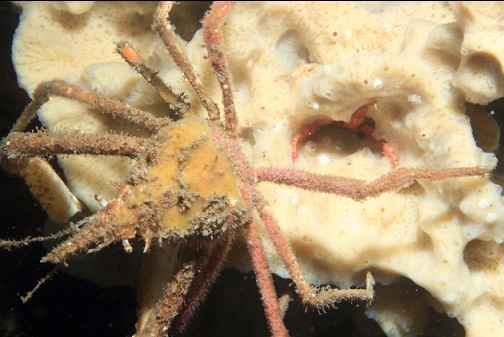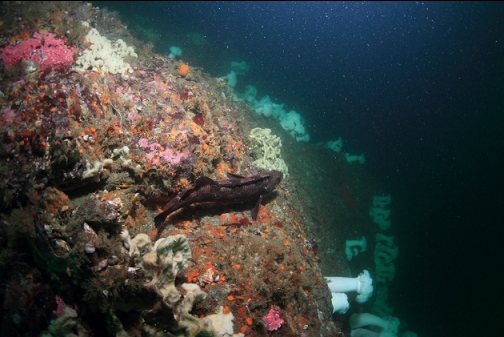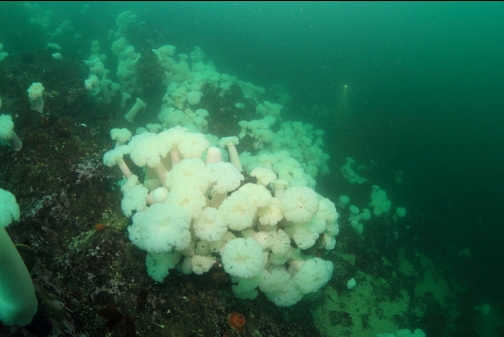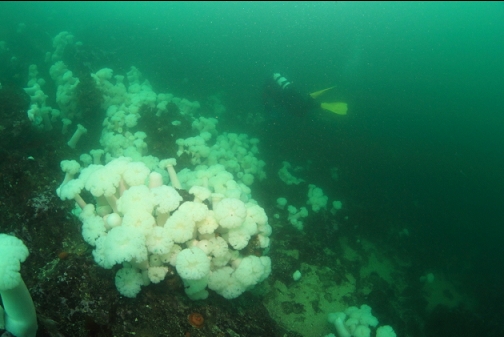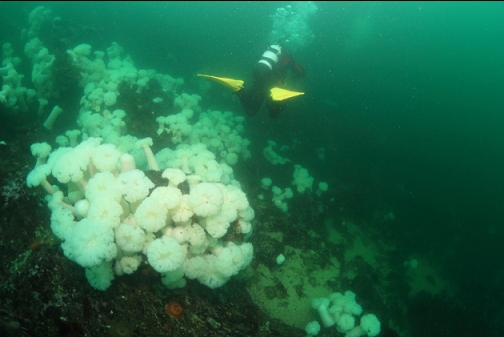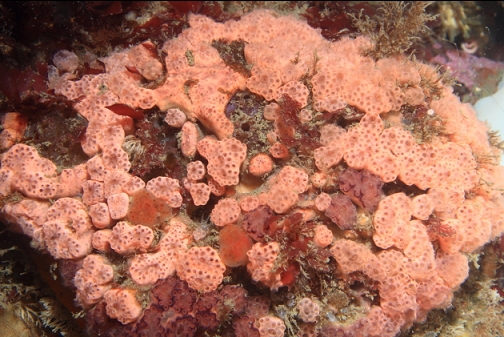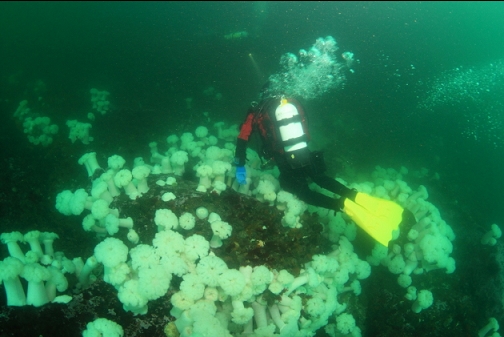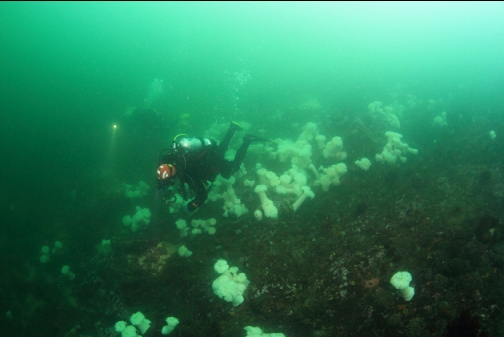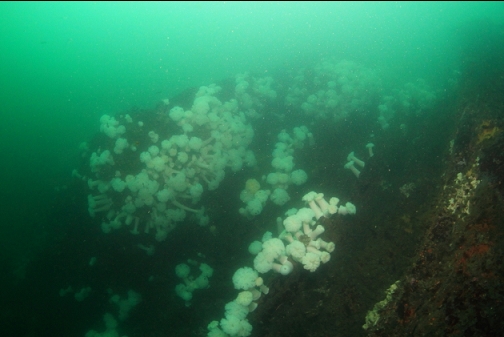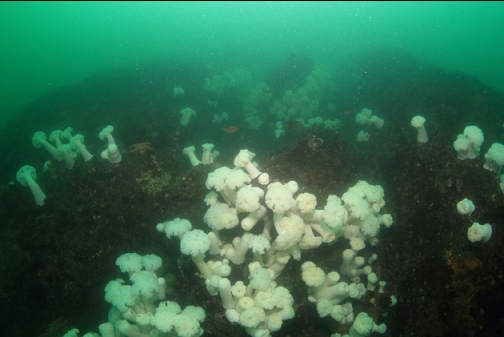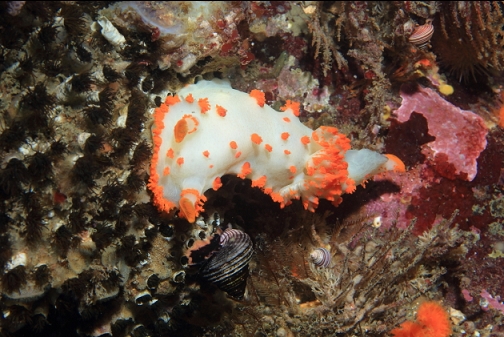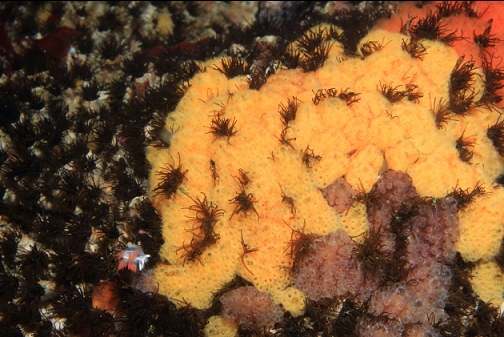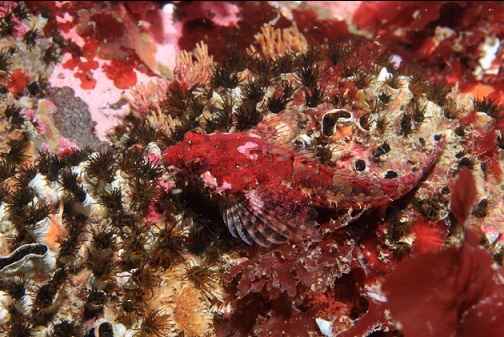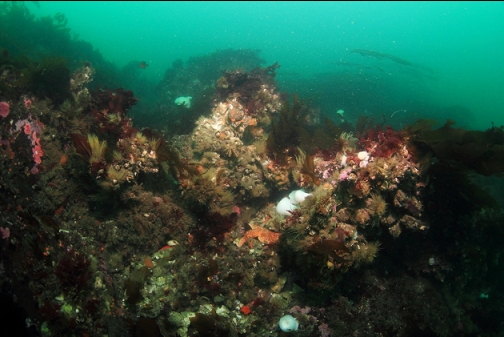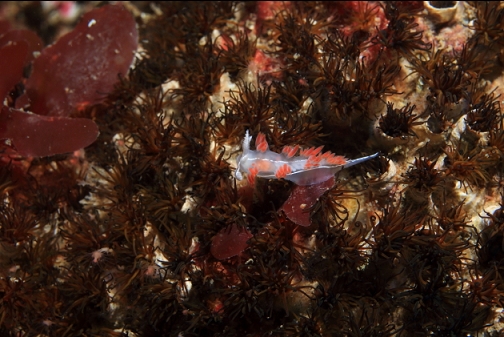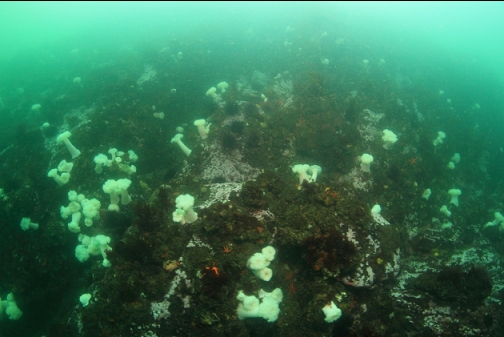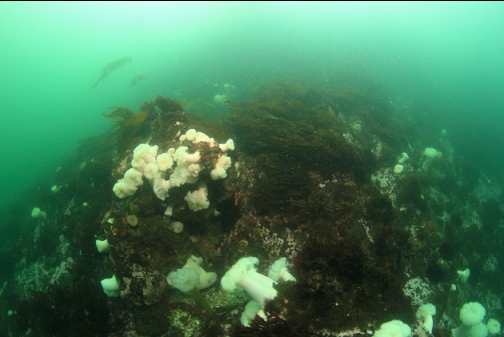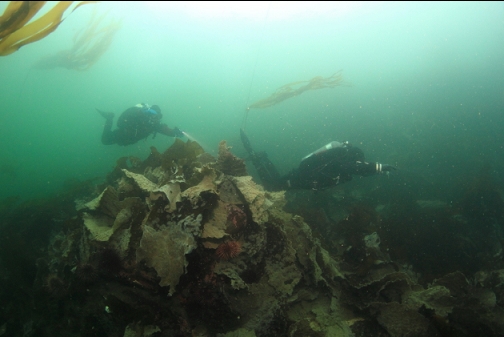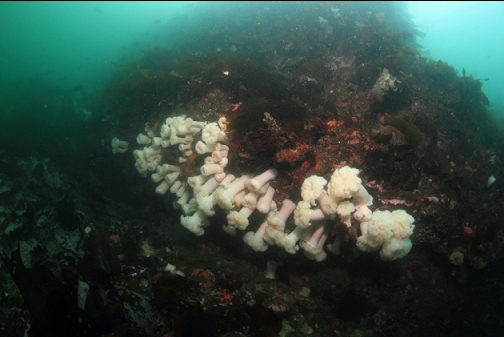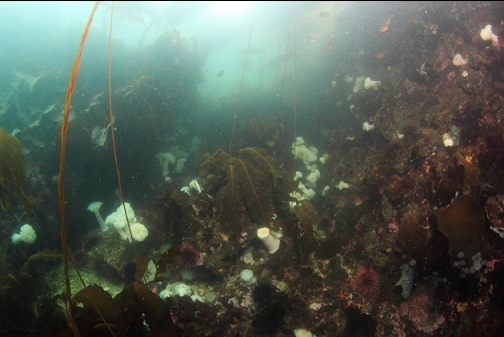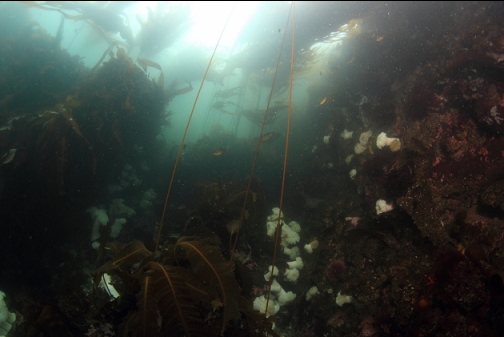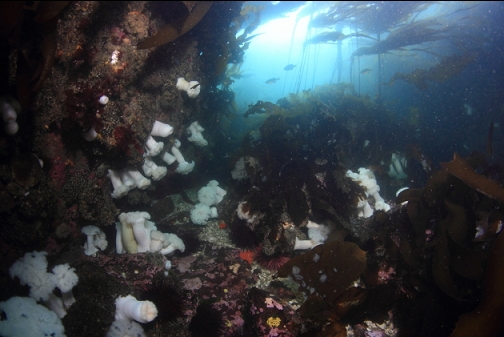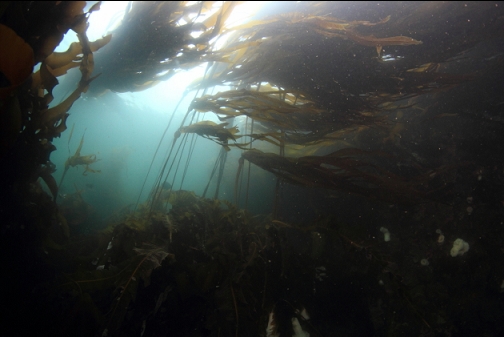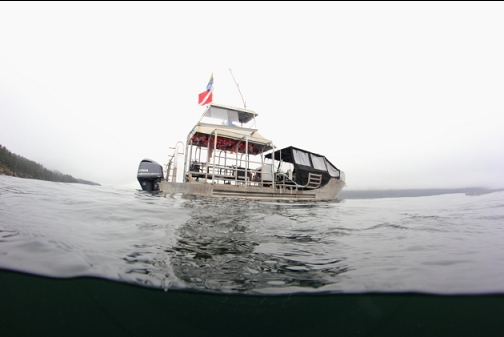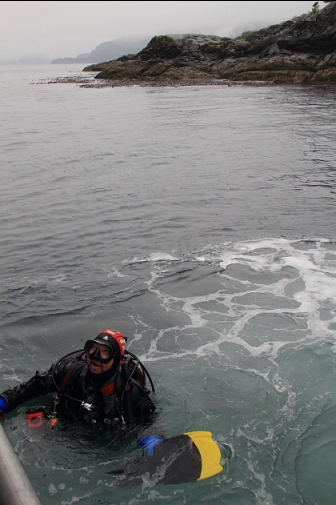This is a spot I've wanted to dive for almost 20 years. It's a steep, small-ish, forested island off the East tip of South Pender Island. Sea Dive Charters was going here for some exploratory dives on July 3, 2022 so I had to go along. It was a rainy, misty day, but the wind was calm. The spots I was interested in diving were the tips of the elongated island, where the current is strongest. The outside tip (facing open water) had an obvious and intimidating flow (it was a fairly large-exchange day). This end of the islet drops down steeply underwater to well over 100' deep. The other tip of the islet faces a narrow channel between it and Pender Island. This channel is about 80' deep in the middle.
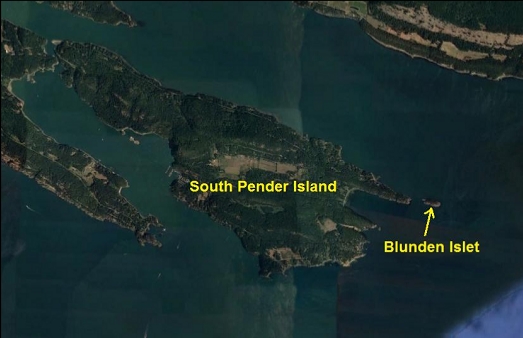

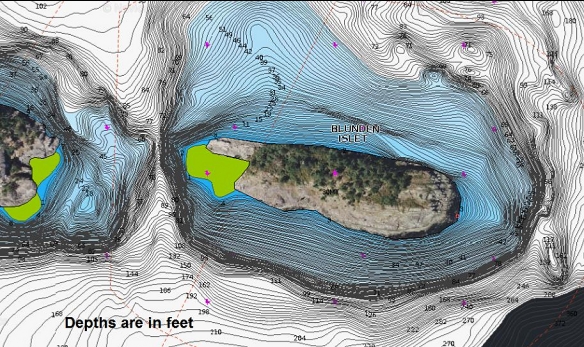



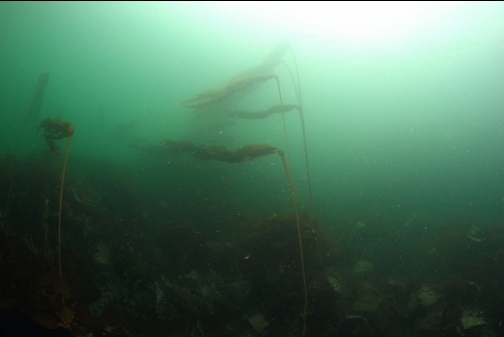
The current was flowing South through the channel. We decided to drop in just around the corner on the South side of the islet and try and swim into the channel against the current. If it was too strong, we could swim back along the sheltered South side of the islet. Visibility was about 15' near shore, but improved to about 20' deeper down. Once past the kelp covered shallows, the rocks were covered with cemented tube worm colonies.
Even though the majority of the current was flowing South through the channel, there must have been some back-eddies creating turbulence since I was suddenly swept along North into the channel. I then hit a wall of current flowing back South and then another flow taking me downwards. Basically, it seemed to be swirling around in several directions, probably because of the complex topography in the channel. From what I could see, the channel was full of colourful invertebrate life. Probably the most notable were the abundant colonies of gnarled sponge.







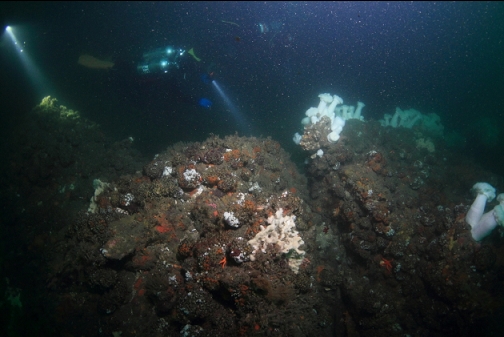



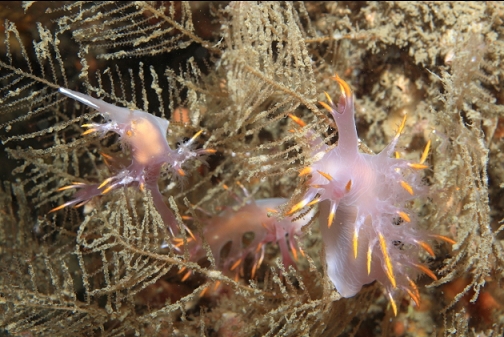
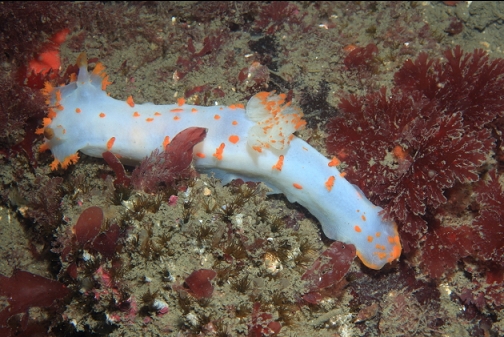
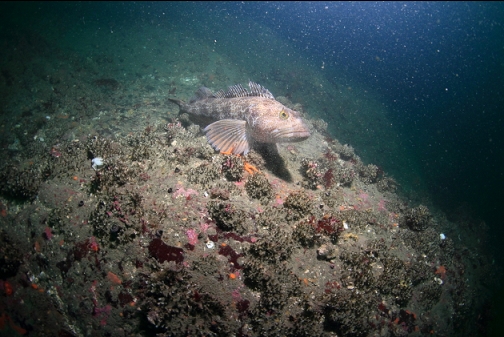

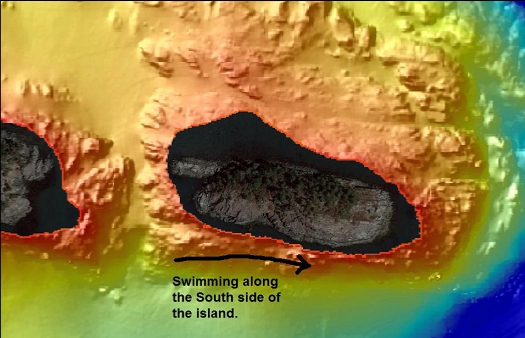
I struggled back out of the channel. My maximum depth in the South side of the channel was just over 100' deep. Now I swam along the South side of the islet about 50-70' deep. The bottom at this depth was a slope of sand with rocky reefs and boulders. There was much less colour here compared to the channel. Much of the surfaces seemed kind of grey and silty. I'd guess this area doesn't get much current. The highlight was a basket star. I don't remember the exact depth, but I think it was around 60' deep.
I swam up a bit shallower and came across a shallow wall that dropped from 25' deep at the top to about 45' deep at the bottom. At the top of the wall, there was the bull kelp forest that rings the islet. A bit off the bottom of the wall, I saw another basket star.
For a second dive, we went back to the channel end of the islet. This time we entered from the North side. The current had slowed down considerably so I was hoping to have a more relaxing look around in the channel. As I descended, I noticed that the bottom here just outside of the channel seemed much more clean-swept and colourful compared to the South entrance. There were lots of plumose anemones and probably more patches of encrusting hydrocoral than I've seen anywhere outside of Race Rocks.
I swam down around the corner into the channel. I didn't go all the way to the bottom. My maximum depth was about 70'. As I swam along the invertebrate-crusted rock wall I kept thinking that this must be one of the prettiest spots in the Gulf Islands. Everywhere I shone my light, there was colour. There were lots more of those gnarled sponges and more hydrocoral. There were muticoloured tunicate colonies on the cemented tube worms. And then the cup corals, nudibranchs, hydroids, etc...
I swam back the way I came out of the channel.
I personally thought the channel-area between Blunden Islet and Pender Island was a great dive. I'd come back here anytime and I still want to dive the outer tip of Blunden Islet, but it would take a much better-current day to try it.









